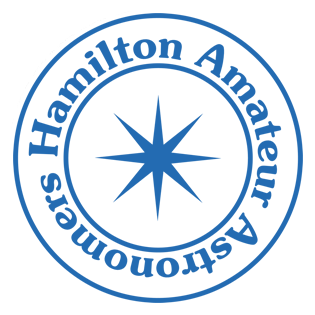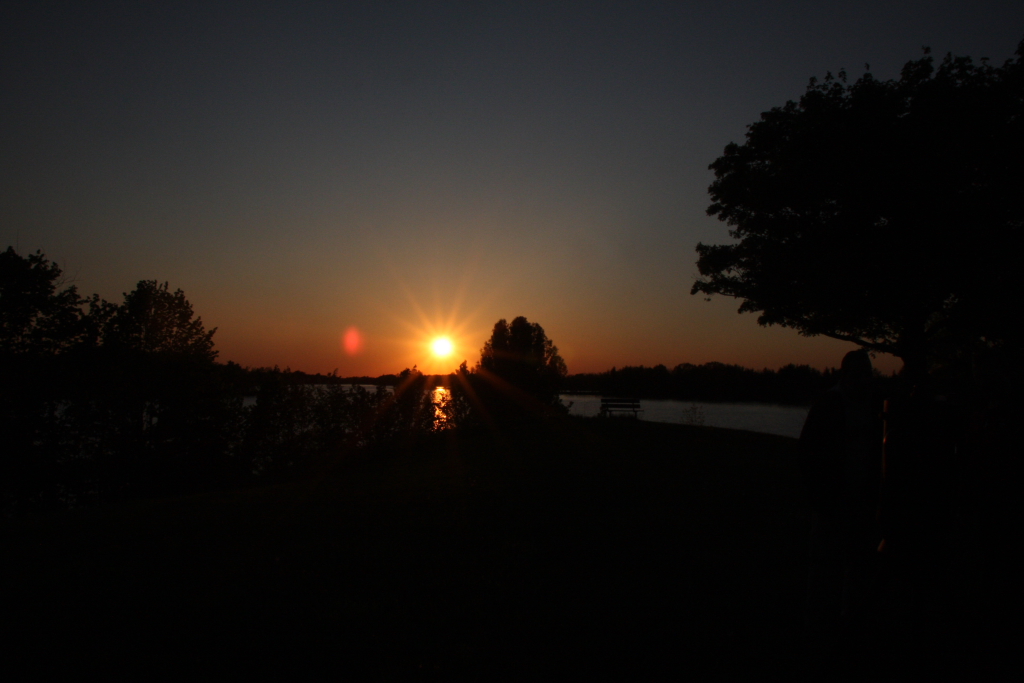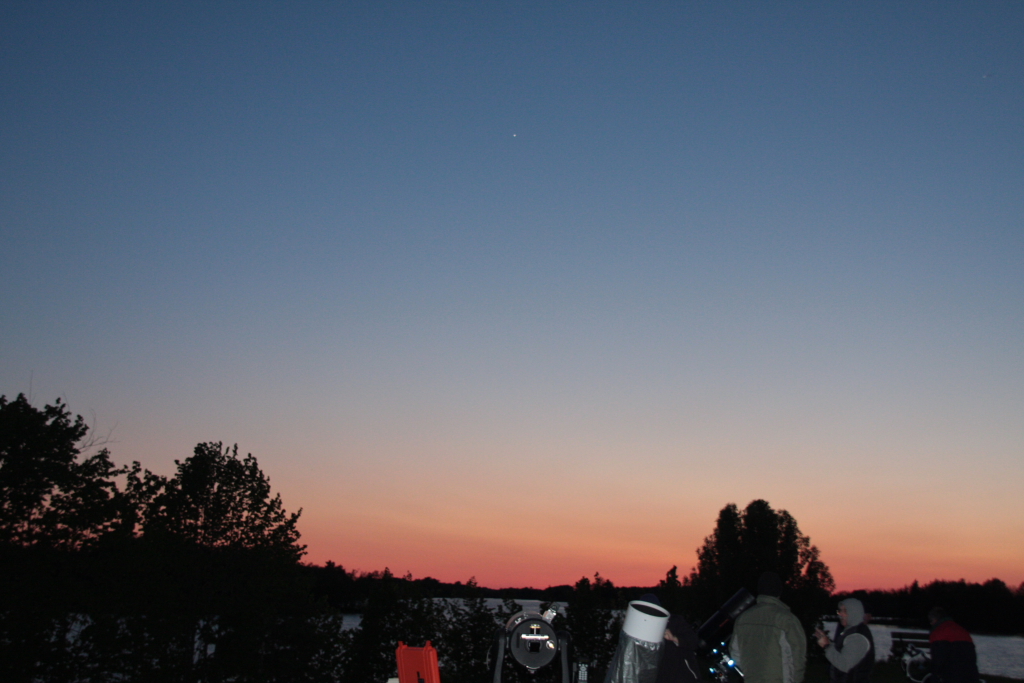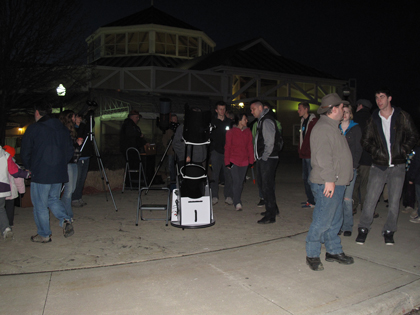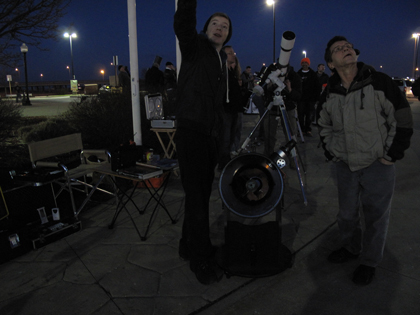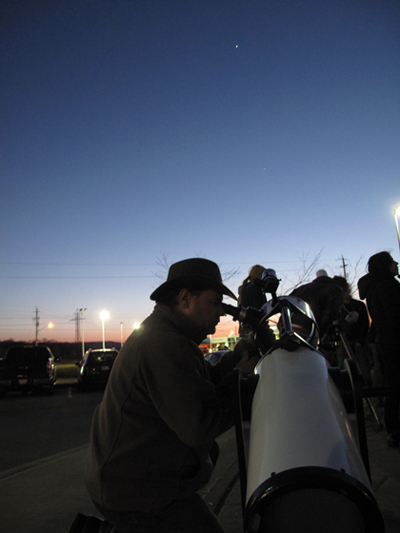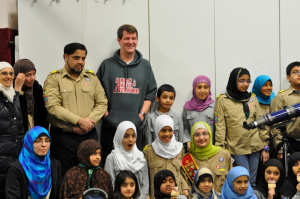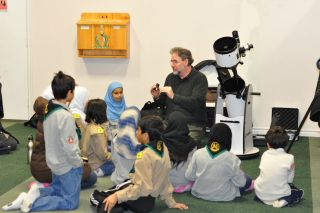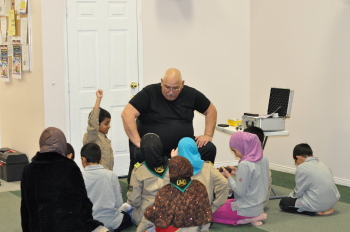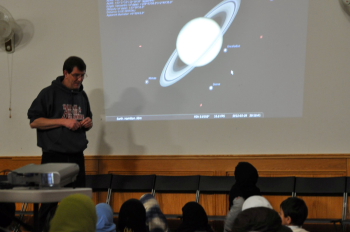If you were in Northern California or Nevada, you would have an opportunity to see an Annular Solar Eclipse. This is an event when the Moon passes in front of the Sun. But the Moon is at or near Apogee, which is the furthest it gets in its elliptical orbit around the Earth so it appears a bit smaller and doesn’t quite completely cover the Sun leaving a thin ring of light (the Annulus).
If you’re not fortunate enough to be located there, you can still see a partial eclipse from most of the Western and Central regions of North America. However the visible duration of the eclipse is reduced more as you move further East. Sadly those along the East coast won’t see anything as the Sun will have set before the eclipse occurs.
For those of us in Southern Ontario, we do have a chance to see a small portion of this event. Sun will set during the eclipse so we might only see the beginning of it.
First a Warning: Never look directly at the Sun, even near sunset, without proper safety eye protection. This means using an approved solar filter or perhaps a #14 welders lens. Failure to heed these precautions could result in permanent eye damage. Another option is pin hole projection: one piece of paper with a pinhole held in front of another used as a screen. You can sometimes use the shadows of leaves in this fashion – though the shadows may be rather long due to the late time of day.
Since this event is going to occur near sunset and we won’t have much time, to maximum that little time, try to get as far West as you can and overlook water or a very low horizon. Also a mountain cliff could work. You want to minimize the obstructions on the horizon as much as possible. Look West (compass bearing 287 degrees from our area) and follow the Sun as it sets. It will begin approx 8:20pm from our latitude and end when the Sun sets at about 8:35pm.
The following is a chart showing the path of the eclipse and the areas which will see a partial eclipse. Click on image to see larger version.
NASA also has an interactive Google Map here which can give some information. It mostly shows the path of the total eclipse, not the partial areas. But it does provide start times for other areas – it just doesn’t indicate when sunset occurs and the end of your viewing. Note: this site is a bit slow due to volume.
Our Facebook page also has a link to the Sky&Tel’s website which has links to more information.
At the time of this posting, the forecast for area is expected to be clear on Sunday. Please enjoy safely.
